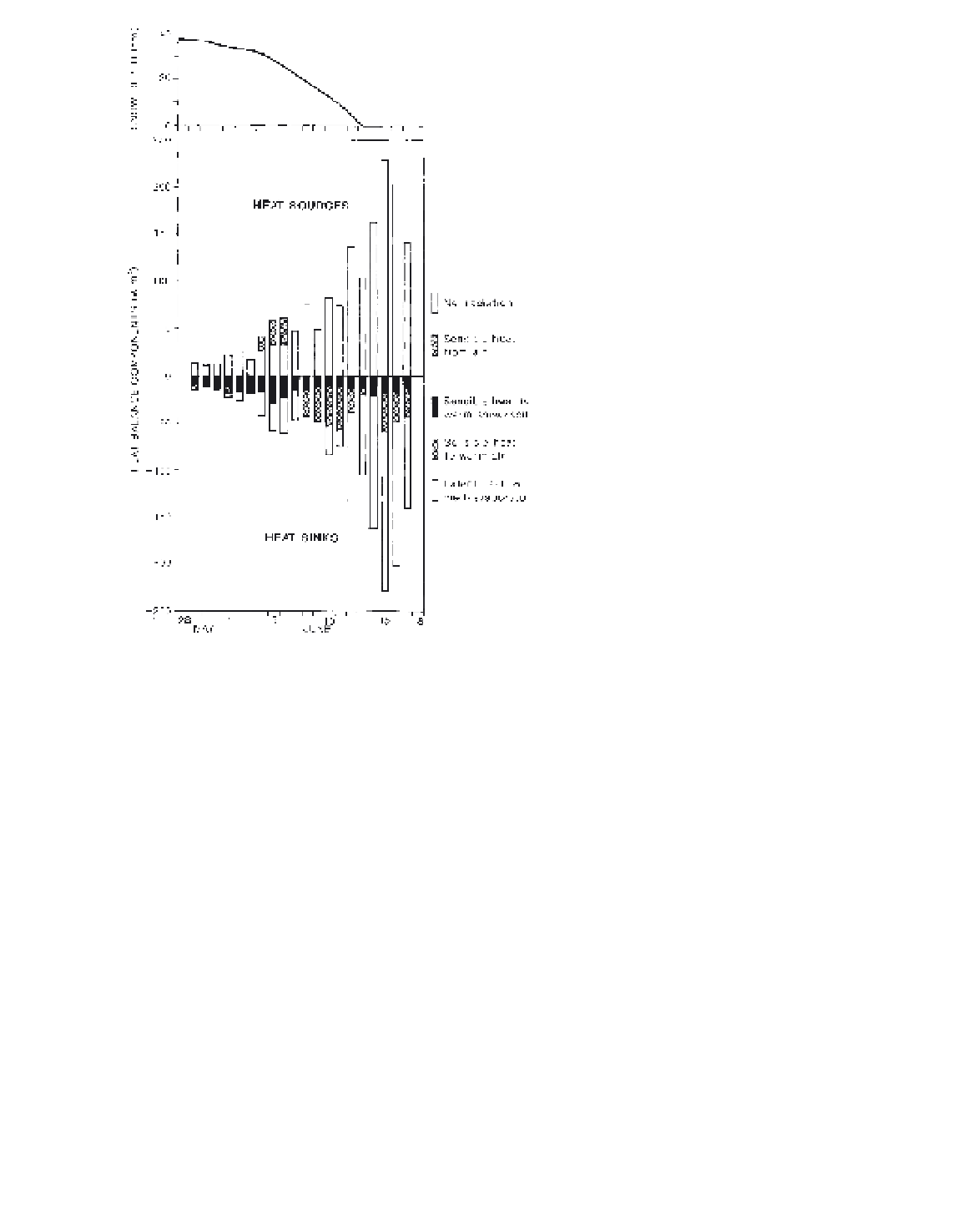Geoscience Reference
In-Depth Information
averaging 10 m s
-1
, except when storm systems cross
the area.
b Antarctica
Except for protruding peaks in the Transantarctic
Mountains and Antarctic Peninsula, and the dry valleys
of Victoria Land (77°S, 160°E), over 97 per cent of
Antarctica is covered by a vast continental ice sheet.
The ice plateau averages 1800 m elevation in West
Antarctica and 2600 m in East Antarctica, where it rises
above 4000 m (82°S, 75°E). In September, sea ice
averaging 0.5 to 1.0 m in thickness covers twenty
million km
2
of the Southern Ocean, but 80 per cent of
this melts each summer (Figure 10.35B).
Over the ice sheet, temperatures are almost always
well below freezing. The South Pole (2800-m elevation)
has a mean summer temperature of -28°C and a winter
temperature of -58°C. Vostok (3500 m) recorded -89°C
in July 1983, a world record minimum. Mean monthly
temperatures are consistently close to their winter value
for the six months between equinoxes, creating a
so-called 'coreless winter' (Figure 10.39). Atmospheric
poleward energy transfer balances the radiative loss
of energy. Nevertheless, there are considerable day-to-
day temperature changes associated with cloud cover
increasing downward long-wave radiation, or winds
mixing warmer air from above the inversion down to
the surface. Over the plateau, the inversion strength is
about 20 to 25°C. Precipitation is almost impossible to
measure, as a result of blowing and drifting snow. Snow
pit studies indicate an annual accumulation varying
from less than 50 mm over the high plateaux above 3000
m elevation to 500 to 800 mm in some coastal areas of
the Bellingshausen Sea and parts of East Antarctica.
Lows in the southern westerlies have a tendency to
spiral clockwise towards Antarctica, especially from
south of Australia towards the Ross Sea, from the South
Pacific towards the Weddell Sea, and from the western
South Atlantic towards Kerguelen Island and East
Antarctica (Figure 10.40). Over the adjacent Southern
Ocean, cloudiness exceeds 80 per cent year-round at 60
to 65°S (see Figures 3.8 and 5.11) due to the frequent
cyclones, but coastal Antarctica has more synoptic
variability, associated with alternating lows and highs.
Over the interior, cloud cover is generally less than 40
to 50 per cent and half of this amount in winter.
The poleward air circulation in the tropospheric polar
vortex (see Figure 7.3) leads to subsiding air over the
Figure 10.38
The effect of tundra snow cover on the surface
energy budget at Barrow, Alaska, during the spring melt. The
lower graph shows the daily net radiation and energy terms.
Source
: Weller and Holmgren (1974) From
Journal of Applied
Meteorology
, by permission of the American Meteorological Society.
ice-caps and glaciers. Nevertheless, 10 to 20 km inland
from the Arctic coasts in summer, daytime heating dis-
perses the stratiform cloud and afternoon temperatures
may rise to 15 to 20°C.
The Greenland ice sheet, 3 km thick and covering
an area of 1.7 million km
2
, contains enough water to
raise global sea-level by over 7 m if it were all melted.
However, there is no melting above the equilibrium
line altitude (where accumulation balances ablation),
which is at about 2000 m (1000 m) elevation in the
south (north) of Greenland. The ice sheet largely creates
its own climate. It deflects cyclones moving from
Newfoundland, either northward into Baffin Bay or
northeastward towards Iceland. These storms give
heavy snowfall in the south and on the western
slope of the ice sheet. A persistent shallow inversion
overlays the ice sheet with down-slope katabatic winds

